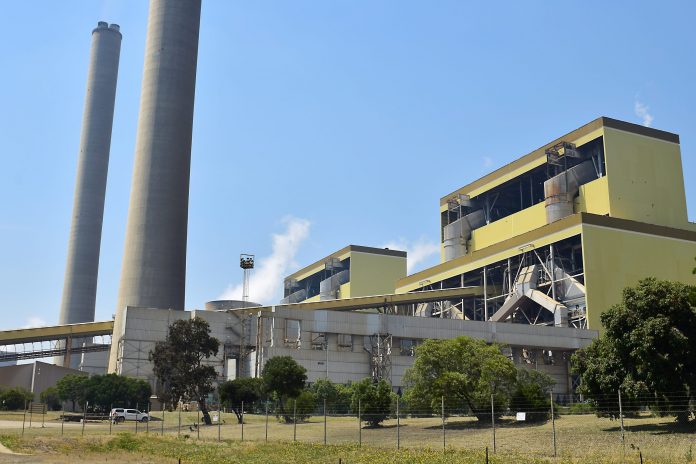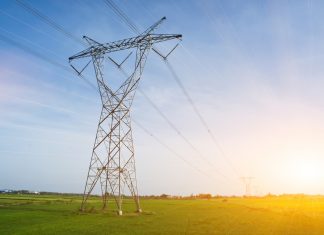PHILIP HOPKINS
By PHILIP HOPKINS
LOY Yang A power station was at the heart of a headline $1 billion loss in the first half of the financial year announced last week by AGL.
The chief executive, Damien Nicks, said the prolonged outage of Loy Yang Unit 2, which was caused by a generator rotor defect, was a big factor in the cut of electricity production at a time of high power prices on the spot market.
Earnings were also affected by the closure of Unit 3 on the Liddell Power station in the NSW Hunter Valley, which reduced generator volumes.
However, the bottom-line loss of $1.075 billion was mainly due to a write down on the accelerated closure of Loy Yang A, which was flagged last September, and accounting losses.
Mr Nicks confirmed that Loy Yang A was still scheduled to be closed by 2035.
AGL’s underlying half year profit after tax was $87 million, down 55 per cent on the previous year. An interim ordinary dividend was halved to eight cents a share.
Mr Nicks said the accelerated closure of Loy Yang A, together with the ambition to supply up to 12 gigawatts of renewable generation and firming capacity by the end of 2035, would reshape AGL’s generation portfolio. “(It) represents a major step forward in Australia’s decarbonisation journey,” he said.
The results came after a tumultuous year for AGL, when a planned demerge of the business into a coal generation and retail arms was stymied by rich lister Mike Cannon-Brookes, whose company Grok Ventures is a leading AGL shareholder.
Grok had been pushing for an early closure of Loy Yang by 2029, but a new transition plan backed by the board last September brought the closure of Loy Yang forward by 10 years to 2035. The earlier closure date resulted in the write-down in Loy Yang A’s value.
The company’s leadership also changed, which eventually included the appointment of Mr Nicks as chief executive.
Mr Nicks said in the half-year results that AGL was making good progress in its 3.2-gigawatt development pipeline and the transformation of thermal sites to low-carbon industrial energy hubs.
“Both the Torrens Island (South Australia) and Broken Hill batteries are on track to commence operation mid-2023… And the Liddell battery will be backed by ARENA (Australian Renewable Energy Agency), with funding negotiations under way for the first 250-megawatt phase,” he said.
“A feasibility study is also well under way with Idemitsu for the Muswellbrook Pumped Hydro Project.”
Mr Nicks said forward wholesale electricity prices were lower than the historically high levels of the past six months, but were higher compared to the previous two financial years, “which we expect to see reflected in strong earnings growth for the (financial year) 2024”.
Mr Nicks emphasised that commercial availability of the coal fleet was badly affected by the forced outages at Loy Yang and Liddell, which also coincided with a planned outage at Bayswater. The Loy Yang and Liddell outages reduced profit by $73 million.
“On a positive note, we have completed testing to lower minimum generation levels at both Loy Yang A and Bayswater,” he said.
Mr Nicks said a key AGL priority was minimising equipment failures in the thermal fleets that may result in future unplanned outages and derates. This included preventative maintenance on mills, precipitators and chemical cleans of boilers.
Stronger inventory management ensured that, where appropriate, critical spares were held on site or accessed within a reasonable time frame.
“Repairing Loy Yang A Unit 2’s spare rotor and stator is an example that would provide a shorter return to service time if such an event were to reoccur,” he said.
The company downgraded its full year net profit guidance to between $200m and $280m, down from an earlier estimate of up to $320m.
Mr Nicks, however, was generally upbeat on the company’s immediate and long-term future, but AGL shares closed more than 10 per cent down.
Mr Nicks criticised the federal government’s caps on gas and oil prices in remarks to The Australian. The action created uncertainty for miners and gas producers, despite the caps helping reduce forward wholesale power prices, and could cause long-term shortages if resource companies stopped investing in new gas projects, he said.
The Australian Financial Review reported that the loss refuelled market concerns about AGL’s ability to deliver on both decarbonisation and shareholder value under its revamped leadership.
Jamie Hannah, portfolio manager at VanEck, told the AFR that despite the share slump, he had not lost confidence in the new chief executive of the new board to deliver – “the challenge is still the same”.
However, others remained unconvinced.
“(The) result is yet another reminder that business as usual for AGL is not a credible pathway forward for the business,” Gregg Liddell, responsible investments director at Betashares, told the AFR.











